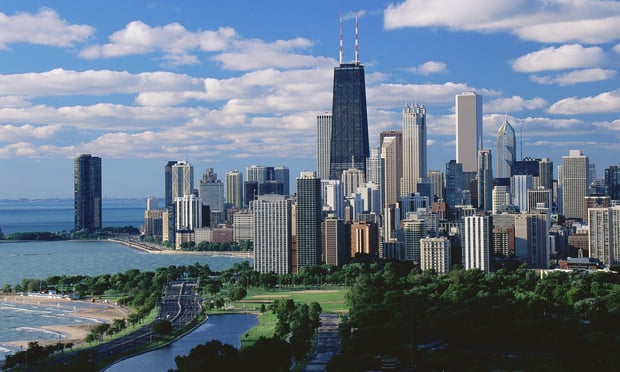CHICAGO—A combination of overall job growth, economic recovery, and a slow pace of new construction deliveries helped the Chicago office market rebound at the end of 2015, according to a fourth quarter report by Transwestern. "Both 2014 and 2015 saw favorable long-term deals for tenants that could afford to relocate and take advantage of the lower-than-average rental rates and higher-than-average landlord concessions," the firm found.
And as we look ahead to a new year, Transwestern said that solid fundamentals, including falling unemployment, low interest rates and higher office absorption bode well for commercial property owners. In fact, the firm forecasts that landlords will be able to increase rental rates over the next 12 months. And while interest rates remain relatively low, investors should continue to jump into the Chicago office property market in 2016, setting records for building sales prices and sales volume.
Several major new office properties, including Hines' River Point at 444 W. Lake St., Sterling Bay's Fulton West and 150 N. Riverside will add 3.05 million square feet to the market starting in 2016. Developers currently have 20 office buildings proposed for River North, River West and West Loop, which would add 11 million square feet of office space to downtown Chicago. "However, it is unlikely that even 25% of these buildings will break ground in the next five years, leaving fundamentals for existing property owners trending in their favor as tenants compete for existing space," Transwestern said.
Net absorption overall peaked in the fourth quarter at 1.8 million square feet, according to Transwestern data. That means more tenants settled into space during the last three months of the year than in all three previous quarters combined. Most of this activity was in the CBD with a majority of the tenants moving into class A space. Google's occupation of its space at Sterling Bay's 1000 W. Fulton St. was just the most prominent example of how tech continues to drive the local office market.
The Chicago metro vacancy rate dropped to 15.5% during the quarter, a drop of 50 bps. Both CBD and suburban activity contributed to the decrease; CBD dropped 80 bps to 12% and the suburbs dropped 30 bps to 19.4%. "It is expected that vacancy will continue to tighten in the first two quarters of 2016 prior to new inventory reaching the market."
© 2025 ALM Global, LLC, All Rights Reserved. Request academic re-use from www.copyright.com. All other uses, submit a request to [email protected]. For more information visit Asset & Logo Licensing.








